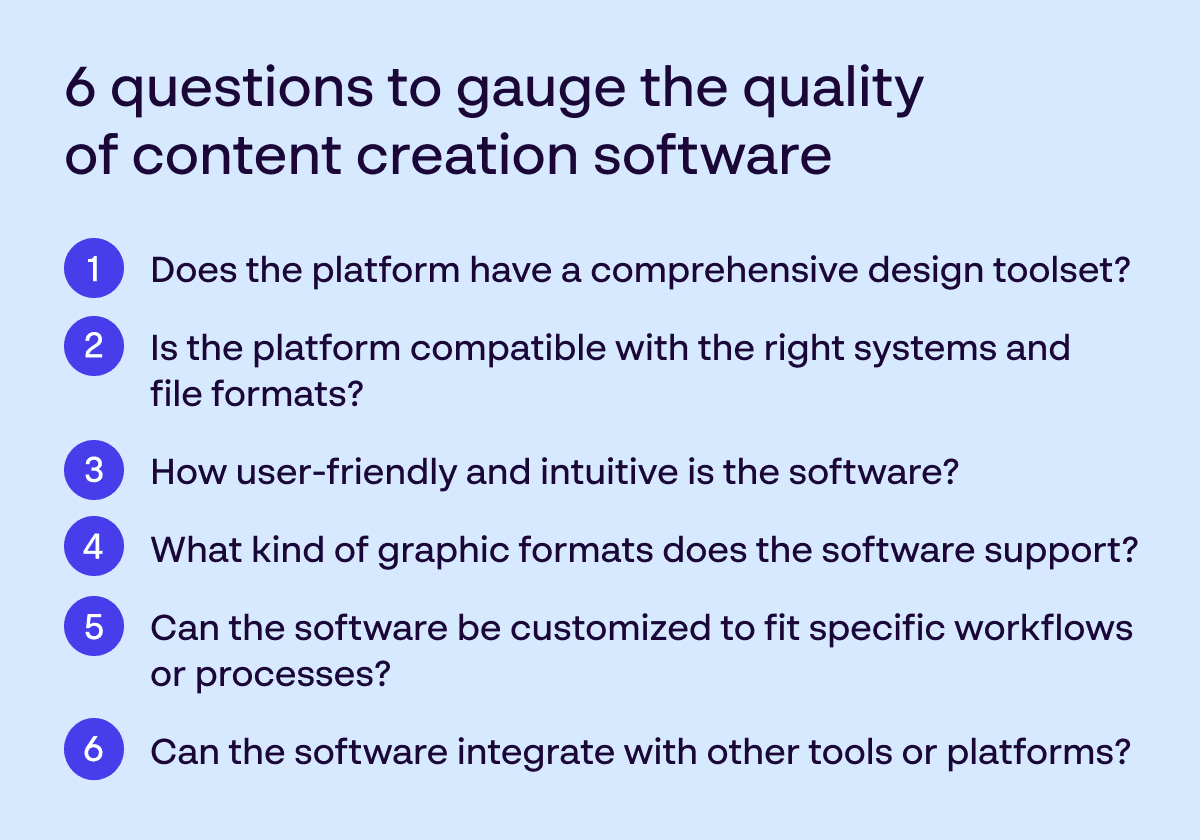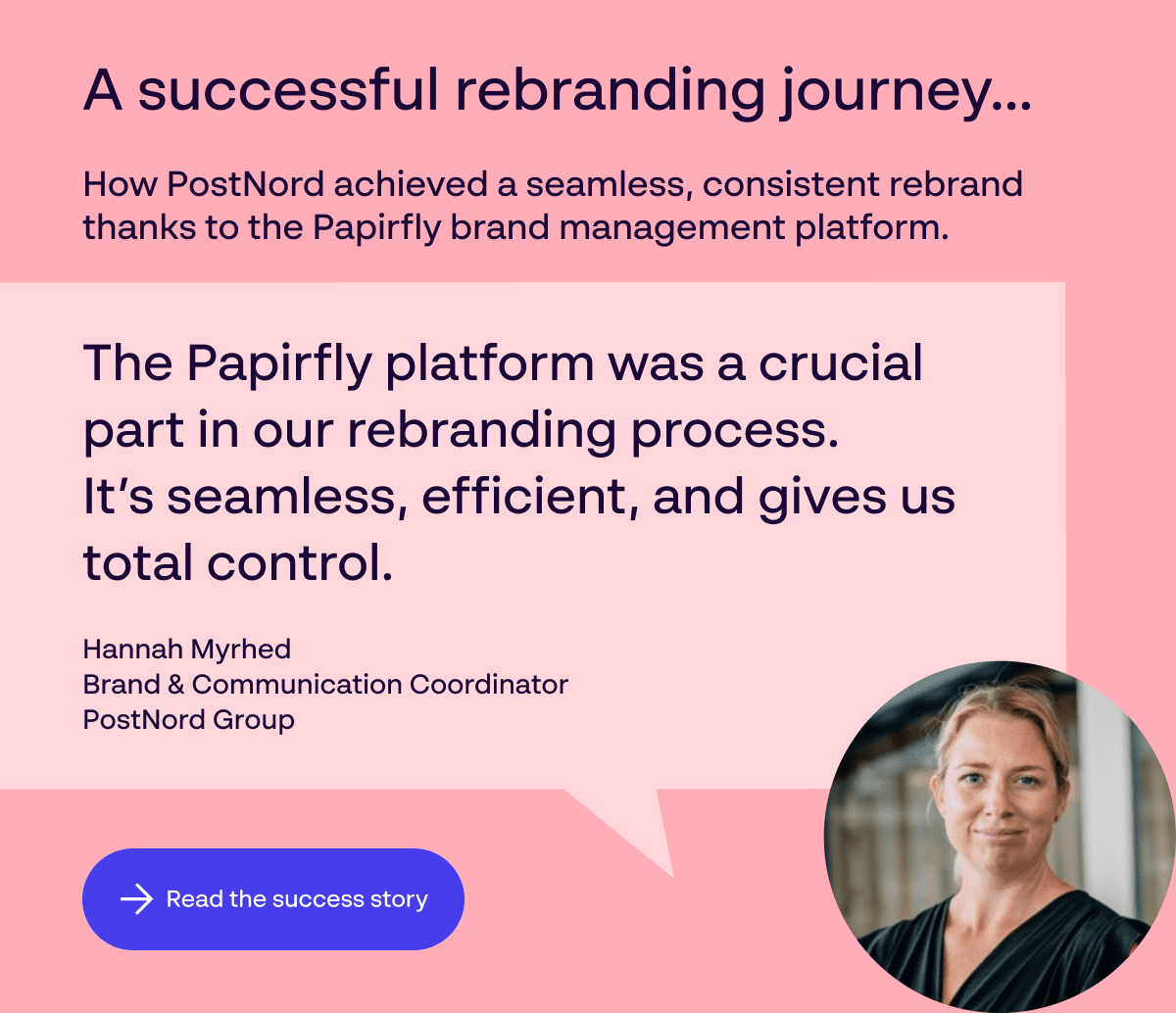Anyone who has been involved in a rebrand or brand refresh will gladly tell you how complex and stress-inducing it can be.
There are many moving parts to stay on top of, from managing the personnel at the heart of this change, to implementing updates to your visual identity across your entire suite of brand assets.
Done right, a rebrand can revitalise your organisation, cut through to a whole new audience, and take your brand’s visibility to a whole new level. But, if handled poorly, it can burn precious time and money, and alienate your most loyal customers.

To put your team in the strongest position to overcome the plethora of rebranding challenges, it’s imperative you equip your employees with the right tools and technology to deliver an effective rebrand on schedule and on budget.
Here, we’ll show you 10 tools you should prioritise to ensure your new brand identity is managed as efficiently and seamlessly as possible.
What are the steps to a successful rebrand?
Before we outline the rebranding tools and marketing technology crucial for the best possible outcome, let’s first break down the rebranding process. After all, knowing the steps to a successful rebrand is key to understanding where these tools can slot in.
While your specific checklist will be unique to your organisation and the scale of your rebrand, we have broken this down into 9 top-line actions that are typically essential to any effective rebrand:
- Conduct a brand audit, identifying your strengths and weaknesses and establishing any change in target audiences, vision or identity
- Carry out research into competitors and other brands as inspiration to guide the direction of your rebrand
- Determine your rebrand’s scale – are you planning on a partial rebrand, a brand refresh, or a full rebrand?
- Create your rebrand strategy, define your new brand identity and set your ambitions for this project
- Develop the assets needed for your rebrand – brand elements, marketing materials, designs, names, slogans, etc.
- Build new brand guidelines that encapsulate the visual identity, tone and overall essence of your updated brand
- Communicate your brand revamp with your internal stakeholders, marketers and employees
- Engage your customers and wider audiences about your rebrand so they are informed and prepared for this shift
- Roll out your rebrand launch and manage the post-rebrand journey
As you can see, there’s a lot to contend with – especially when you take into account the wide range of marketing channels you need content for and the importance of managing the expectations of your existing customers.
The right tools and technology can support you and your team at every step of the process, putting you on the path to a rebrand that achieves the success of Meta or Guinness rather than the unwanted results of GAP or Tropicana. Here are 10 to consider adding to your rebrand toolkit.

10 rebranding tools and technologies to activate your rebrand
1. Market research tools
Great marketing is forged from great research – a rebrand is no different. High-calibre market research tools give you the data and insight you need to guide your rebranding strategy, from identifying the wants and pain points of your target audiences, to understanding the sentiment surrounding your existing brand.
With the right research behind you, you can make informed decisions about the scale of your rebrand, determine where to focus your attention to resonate with potential customers, and discover what competitors and other brands are doing to inspire your evolution.
Of course, market research is a large category in itself, so here are the specific types of tools you should look into in this area:

2. Brand portals
A successful rebrand must be applied consistently across all channels to stick with customers. You cannot afford for old designs, logos, slogans and beyond to creep back into your marketing – everyone in your team must be informed and educated on your up-to-date identity so they follow it as intended.
A brand portal (or brand hub) can be a valuable tool for achieving this requirement. By gathering everything that dictates your new brand strategy in one cloud-based, online location – guidelines, handbooks, tutorials, example assets, etc. – a brand portal becomes the “home” of your rebrand, communicating this change to every relevant user without hassle or confusion.
Bringing your brand values, logo policies, colour palettes, typography, visual elements and more into a single, accessible place, you go a long way to ensure brand consistency in the weeks, months and years after your rebrand launch.

3. Digital Asset Management (DAM) systems
In a similar vein, an effective Digital Asset Management (DAM) solution enables you to lock down the assets at the core of your rebrand. Many marketers have struggled with outdated logos or obsolete branding emerging from different areas following a refreshed identity.
A DAM system keeps all of the latest, verified and approved assets in one library, which your teams across the globe can refer to for their marketing campaigns and other activities. Plus, a good-quality version will include user permissions that prevent users from accessing outdated assets, so there’s never a risk of old materials resurfacing.
Through this “single source of truth”, investing in a DAM goes another step toward guaranteeing your branding is applied consistently on all platforms, and creates a sensible, easy-to-navigate repository for every asset created for your rebrand.

4. Project management tools
The many moving parts behind a rebrand mean strong project management is vital to keep these organised, aligned and progressing in the right direction. Any oversight or gap can cause mistakes that set your rebrand back weeks, send costs skyrocketing and lead to a rocky rollout.
There’s a wide variety of project management tools and software on the market to help you ensure tasks are assigned to the right people, maintain collaboration among the key players in this process, and track progress from start to finish. Here are a few of the leading names to consider:
Investing in one or more of these tools can keep your rebranding project on time and on budget, as well as support your marketing activities post-rebrand.
5. Team communication platforms
In addition to project management tools, team communication platforms are an essential element to keep everyone on the same page during the planning and execution of your rebrand.
If your marketing teams are spread out across the globe or work remotely, relying on emails and phone calls will only slow down progress. A more instant, purpose-built communication tool such as Slack, Hive or Zoom will enable your people to interact more efficiently, leading to a more streamlined and organised journey.

6. Content creation and graphic design software
If you are handling your rebrand in-house, then powerful content creation and graphic design software is an absolute must. This will form the basis for your new logo, visual elements, designs, imagery and beyond, setting the standard that your wider teams will replicate moving forward.
So it’s crucial you choose this technology wisely. With many, many options out in the market, be sure to ask the right questions to locate the design software that’s right for you, such as:

7. Design template software
Regardless of whether you are spearheading the creation of your refreshed brand identity in-house or leaving this task to an external partner, your teams must be able to recreate it for your day-to-day marketing demands.
As the demand for digital content and asset creation continues to grow, there will be limits on how fast your marketing team can keep up. Instead, using your rebrand as the basis for a wide range of on-brand design templates can empower anyone in your organisation to produce assets in line with your new identity, making your teams more agile and consistent.
With the right template software in place, your marketing becomes more self-sufficient and your teams can hit the ground running with asset creation as soon as your rebrand launches.


8. Campaign planning tools
Your rebrand launch is a make-or-break moment in this process. It should be built up through your marketing to build anticipation and gradually introduce your audience to your brand’s new look and feel – not forced out without warning like the transition from Twitter to X.

A successful rebrand requires a successful launch campaign. A capable campaign execution tool empowers you to map out this event with precision and care, plotting out the teases, rationales and explainers that will help your rebrand resonate with both new and existing customers.
Beyond the launch event, campaign planning tools can also add structure and consistency to your marketing activities long after your rebrand has taken centre stage.
9. Data and analytics tools
When you formed your rebrand strategy, you undoubtedly would have established targets and KPIs to measure the success of your rebrand. These targets may include:

To track your performance against these and other parameters, you should invest in robust data and analytics software.
From brand sentiment and social listening tools that enable you to gauge the reception of your rebrand, to financial analysis software to assess the tangible outcomes of this refresh – gathering data in the weeks and months after you rebranded will help you identify any areas for improvement.
10. Modular brand suites
A successful rebrand is built on the strength of your brand management. This encapsulates the strategies, techniques and processes your organisation uses to maintain and improve your brand in the long term.
Rather than buying dozens of tools from separate vendors, an end-to-end suite that you can build at your own pace incorporates several of the tools outlined above – DAM systems, content creation, brand portals, campaign planning – into one universal solution.
This consolidated sete of solutions can make it simpler to handle your numerous responsibilities without needing to juggle or invest in multiple disparate tools. This multi-layered approach streamlines your technological load, while still giving you the same all-encompassing support.

Make your rebrand stick with the right tools and technology
Rebranding is a heavy undertaking at any scale. You need the right vision, the right people and the right technology to deliver a result that places your new-look brand on the best footing possible. A direction that takes your company forward and builds deeper connections with your audience, rather than alienates people so much that you have to return to square one.
We hope this article helps steer you toward the optimal rebranding tools for your specific marketing efforts. By using our categories as your starting point, you can look forward to a more straightforward, efficient and stress-free journey, and start preparing for a bright future under your new brand identity.
